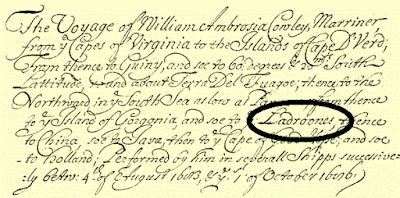Not all the old people believe this, but some do.
Do not take the photo of just three people.
Mungnga na tres ha' na taotao gi litråto.
Either one or two, four or more...but never just three.
The belief is that, if just three people appear in the picture, something bad (even death) will happen to someone among the three. Many Asian people believe it will be the one in the middle; he or she will die.
So, people who follow this belief will always call for someone else to join the group to make it four people, or ask one of the three to leave and make it two.
The interesting question is : where did many Chamorros get this idea?
When did Chamorros first get photographed?
The first photographing of Chamorros, as far as we know (see *** note below), started in 1876 with the arrival of the German ship Hertha, whose paymaster, Gustav Riemer, took photos of Guam scenes, including one of a ranch where five or six Chamorros appear. Photos of Chamorros are sparse from that time on until the Americans get to Guam and the Germans to Saipan at the turn of the century.
In the early 1900s, Chamorros were photographed by Americans, Germans and other foreigners to be viewed by foreigners, especially in magazine and newspaper articles. Missionaries also took many photos of Chamorros to be shared with their missionary agencies abroad.
But when did Chamorros start to take pictures of themselves, for their own personal and family use?
We have photos of elite Chamorro families on Guam and Saipan in the early 1900s, taken by American or German photographers, who gave copies to these families. A wedding picture, for example, of Pedro Martinez and his wife, Maria Torres, was taken in the early 1900s. Photos start to abound by the 1920s of affluent Chamorros, traveling to Manila, for example, or of young Chamorro belles all dressed up. Copies of these photos were given to those in the picture, and the ones of Chamorros traveling off-island were taken specifically for the people traveling.
Thomas Mayhew was well-known in pre-war Guam as a photographer, at first working for the Navy and later opening his own studio. By the 1930s, many middle-class Chamorros were getting their picture taken by Mayhew. Saipan Chamorros were also getting personal and family portraits done by Japanese photographers.
So, if many elderly have this belief that three people in a photo is a bad thing, this belief could have only started in the 1900s, possibly as late as the 1920s or 30s when photography became more known among Chamorros. So. Where did they get the idea?
The Japanese
As already mentioned, many Asians had the belief that three people in a photo is a bad thing. One of those Asian countries is Japan. In the early days of photography, the technology of the time allowed the camera to focus only on the person in the middle, with the other two appearing less clear. People believed that the camera stole your soul, so the middle person's soul was grabbed by the camera most of all, the middle person being the clearest in the picture. Thus, the middle person photographed was doomed to die.
With so many Japanese moving to Guam and marrying Chamorro wives in the early 1900s, perhaps some Chamorros got this idea from them. There were also many Japanese marrying Chamorro wives in Saipan, as well.
It's one of those things people didn't document in the past, so we will probably never know for sure where this idea came from. But a few good guesses are helpful, at least to wonder about.
Not all Chamorros believe in this rule against three. Many threesomes have appeared in photos and all of them lived very long lives afterwards! Some Chamorros think it is a sinful superstition. I, too, have chided people who really believe someone will die in a group of three.
???THE FIRST CHAMORROS PHOTOGRAPHED???
***Although the oldest photos of Chamorros that I know of are the Riemer photos of 1876, more than likely there were even older photographs of Chamorros that we just don't know about or which have been lost through time.
Chamorros ended up on whaling ships since the early 1800s and could have been part of a group of whalers photographed on the ship or in places they landed.
Chamorros ended up living elsewhere in the mid 1800s; Hawaii, California, Alaska and other places and could have been photographed there.
A few Chamorros moved to Manila in the mid 1800s, temporarily and permanently as well. They could have been photographed in Manila studios before Riemer's photos were taken.
Besides all that, there could have been foreigners before 1876 who stopped by Guam and the other Mariana islands and took photos.
We just don't know about their existence.





































